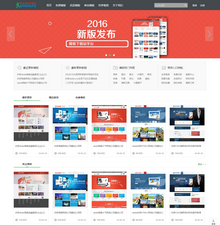问题描述
我偶然发现了 this 帖子并使用了我自己的程序的最终答案的评论中提到的修改.但在我尝试使用以下代码对其进行测试之前:
I stumbled upon this post and used the modification mentioned in the comment of the final answer for my own program. But before I tried to test it with the following code:
import dash
import dash_core_components as dcc
import dash_html_components as html
import plotly.graph_objs as go
import pandas as pd
app = dash.Dash()
daterange = pd.date_range(start='1994',end='2018',freq='W')
app.layout = html.Div(children=[
html.H1('Range Slider Testing'),
html.Div(
[
html.Label('From 1994 to 2018', id='time-range-label'),
dcc.RangeSlider(
id='year_slider',
min=daterange.min (),
max=daterange.max (),
value = [daterange.min(), daterange.max()],
step='W',
),
],
style={'margin-top': '20'}
),
html.Hr(),
dcc.Graph(id='my-graph')
])
@app.callback(
dash.dependencies.Output('my-graph', 'figure'),
[dash.dependencies.Input('year_slider', 'value')])
def _update_graph(year_range):
date_start = '{}'.format(year_range[0])
date_end = '{}'.format(year_range[1])
@app.callback(
dash.dependencies.Output('time-range-label', 'children'),
[dash.dependencies.Input('year_slider', 'value')])
def _update_time_range_label(year_range):
return 'From {} to {}'.format(year_range[0], year_range[1])
if __name__ == '__main__':
app.run_server()
因此,它不会引发任何 Python 错误,但由 Dash 创建的 HTML 上有 Error loading dependencies 文本...
As a result it doesn't raise any Python errors, but the HTML, created by Dash, has an Error loading dependencies text on it...
推荐答案
似乎 dash 默认情况下不支持 datetime 对象.
Seems like dash does not support datetime objects by default.
您可以通过将 datetime 对象转换为 unix 时间戳来解决此问题.
You can solve this issue by converting your datetime object into an unix timestamp.
我对您的问题的解决方案是:
My solution for your problem is:
import dash
import dash_core_components as dcc
import dash_html_components as html
import plotly.graph_objs as go
import pandas as pd
import time
app = dash.Dash()
daterange = pd.date_range(start='1994',end='2018',freq='W')
def unixTimeMillis(dt):
''' Convert datetime to unix timestamp '''
return int(time.mktime(dt.timetuple()))
def unixToDatetime(unix):
''' Convert unix timestamp to datetime. '''
return pd.to_datetime(unix,unit='s')
def getMarks(start, end, Nth=100):
''' Returns the marks for labeling.
Every Nth value will be used.
'''
result = {}
for i, date in enumerate(daterange):
if(i%Nth == 1):
# Append value to dict
result[unixTimeMillis(date)] = str(date.strftime('%Y-%m-%d'))
return result
app.layout = html.Div(children=[
html.H1('Range Slider Testing'),
html.Div(
[
html.Label('From 1994 to 2018', id='time-range-label'),
dcc.RangeSlider(
id='year_slider',
min = unixTimeMillis(daterange.min()),
max = unixTimeMillis(daterange.max()),
value = [unixTimeMillis(daterange.min()),
unixTimeMillis(daterange.max())],
marks=getMarks(daterange.min(),
daterange.max()),
),
],
style={'margin-top': '20'}
),
html.Hr(),
dcc.Graph(id='my-graph')
])
@app.callback(
dash.dependencies.Output('time-range-label', 'children'),
[dash.dependencies.Input('year_slider', 'value')])
def _update_time_range_label(year_range):
return 'From {} to {}'.format(unixToDatetime(year_range[0]),
unixToDatetime(year_range[1]))
if __name__ == '__main__':
app.run_server()
这篇关于Plotly-Dash 存在未知问题并创建“加载依赖项时出错";通过使用 Python-pandas.date_range的文章就介绍到这了,希望我们推荐的答案对大家有所帮助,也希望大家多多支持跟版网!


 大气响应式网络建站服务公司织梦模板
大气响应式网络建站服务公司织梦模板 高端大气html5设计公司网站源码
高端大气html5设计公司网站源码 织梦dede网页模板下载素材销售下载站平台(带会员中心带筛选)
织梦dede网页模板下载素材销售下载站平台(带会员中心带筛选) 财税代理公司注册代理记账网站织梦模板(带手机端)
财税代理公司注册代理记账网站织梦模板(带手机端) 成人高考自考在职研究生教育机构网站源码(带手机端)
成人高考自考在职研究生教育机构网站源码(带手机端) 高端HTML5响应式企业集团通用类网站织梦模板(自适应手机端)
高端HTML5响应式企业集团通用类网站织梦模板(自适应手机端)